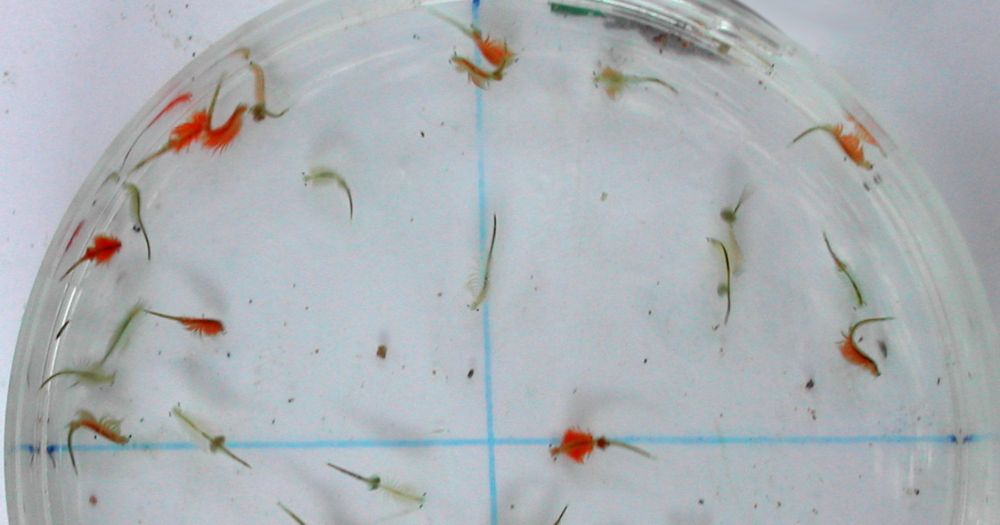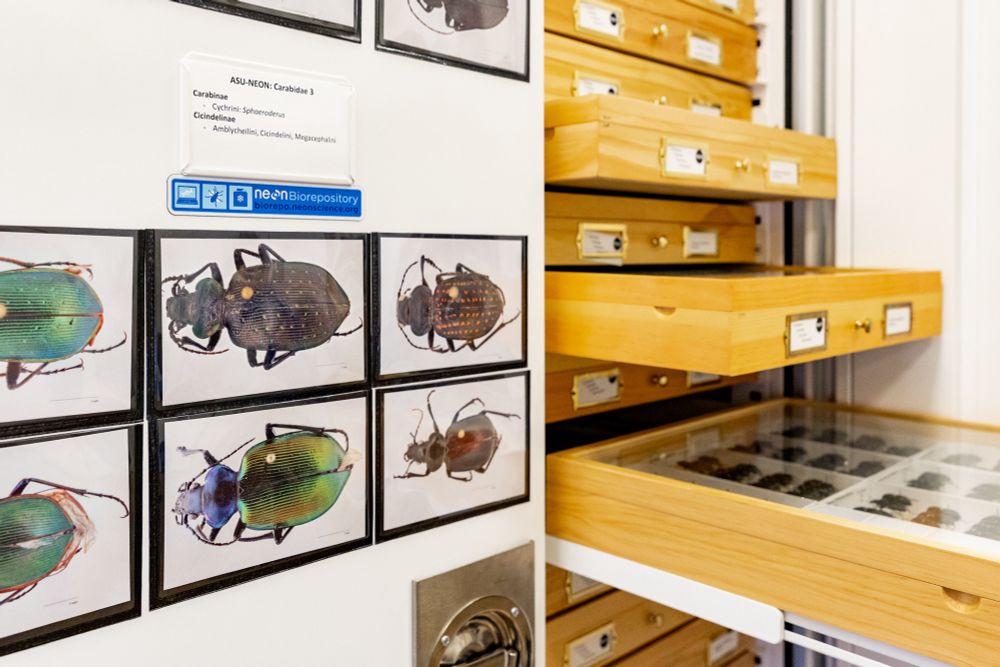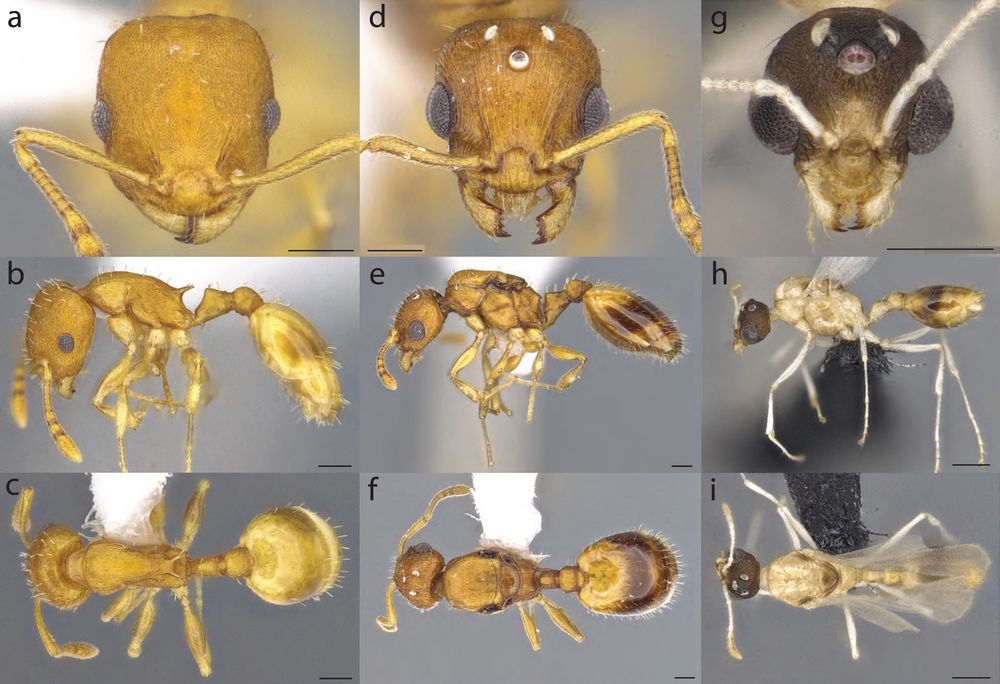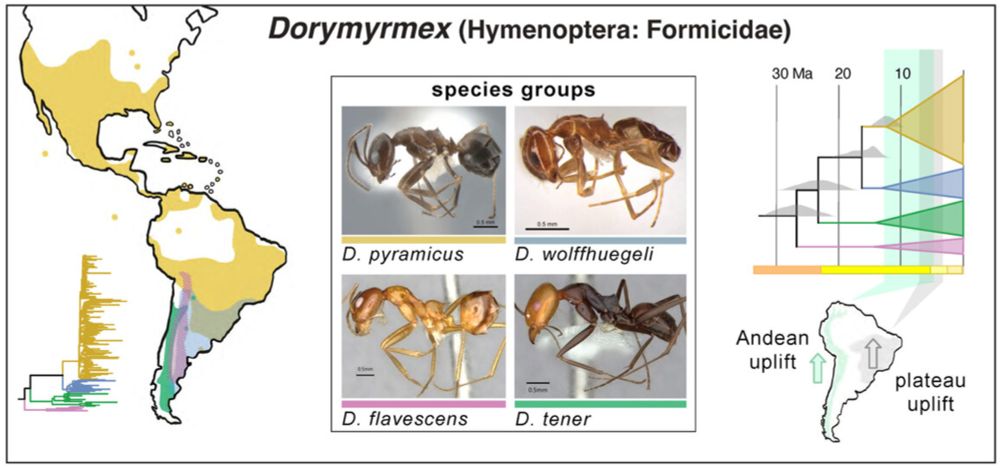
Curator, Social Insect Biodiversity Repository
ant nerd | nature dork | art dweeb

doi.org/10.1093/sysb...
Con: You turn bright red and is more likely to be eaten by a bird
Pro: You become more resistant to arsenic
#Invertebrate 🧪
dailyparasite.blogspot.com/2016/03/conf...

Con: You turn bright red and is more likely to be eaten by a bird
Pro: You become more resistant to arsenic
#Invertebrate 🧪
dailyparasite.blogspot.com/2016/03/conf...
doi.org/10.1093/sysb...

doi.org/10.1093/sysb...

ecdysis.org/collections/...
ecdysis.org/collections/...
What started off as a collaboration invitation to design UCE probes snowballed building a phylogeny of the whole phylum using BUSCOs...

What started off as a collaboration invitation to design UCE probes snowballed building a phylogeny of the whole phylum using BUSCOs...
Arizona State University is hiring a new Director of the ASU Biocollections with a concurrent appointment as a tenured associate or full professor.
*I'd really love for this person to be an entomologist so ento friends, please share!*
apply.interfolio.com/159166

Arizona State University is hiring a new Director of the ASU Biocollections with a concurrent appointment as a tenured associate or full professor.
*I'd really love for this person to be an entomologist so ento friends, please share!*
apply.interfolio.com/159166
www.pnas.org/doi/abs/10.1...
www.pnas.org/doi/abs/10.1...
#nverts #BugSky #PondLife #UKWildlife #Ostracod #Freshwater
#nverts #BugSky #PondLife #UKWildlife #Ostracod #Freshwater
Beetle left, termite right.
bucek-lab.org/projects/Ale...

Beetle left, termite right.
bucek-lab.org/projects/Ale...
This was really difficult to film, their sting is very painful !
#insects #nature #science #macro #macrophotography #myrmecology

This was really difficult to film, their sting is very painful !
#insects #nature #science #macro #macrophotography #myrmecology
Entomological Collections Crew
go.bsky.app/C5VpWiw
Entomological Collections Crew
go.bsky.app/C5VpWiw
An amphipod crustacean, she parasitises salps, devouring them from the inside, forming a vessel to raise her young 👽
#MarineLife 🦑 #ukwildlife
An amphipod crustacean, she parasitises salps, devouring them from the inside, forming a vessel to raise her young 👽
#MarineLife 🦑 #ukwildlife
First off, is my absolute FAVOURITE!
Built like a tank, Armadillagraecia mataranka is found during the wet seasons feeding on tall grass in savannas! 🌱

First off, is my absolute FAVOURITE!
Built like a tank, Armadillagraecia mataranka is found during the wet seasons feeding on tall grass in savannas! 🌱
doi.org/10.5852/ejt....
#taxonomy #ants #insects

doi.org/10.5852/ejt....
#taxonomy #ants #insects
doi.org/10.1111/syen... 🐜

doi.org/10.1111/syen... 🐜
www.biorxiv.org/content/10.1...

www.biorxiv.org/content/10.1...
Turns out those "Manica parasitica" are just Manica bradleyi ants that have been infected with tapeworms
#虫 #昆虫 🧪🐜
royalsocietypublishing.org/doi/full/10....

Turns out those "Manica parasitica" are just Manica bradleyi ants that have been infected with tapeworms
#虫 #昆虫 🧪🐜
royalsocietypublishing.org/doi/full/10....

dailyant.com/2024/11/22/p...

dailyant.com/2024/11/22/p...







